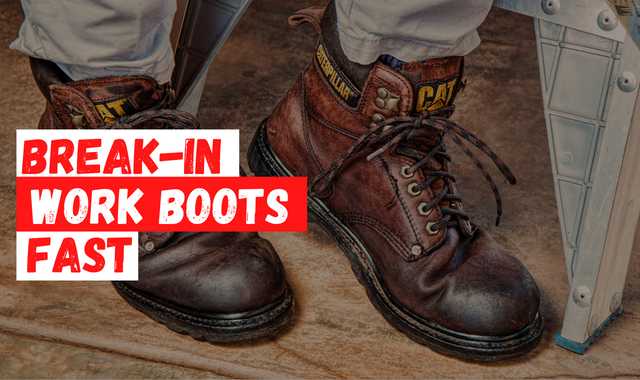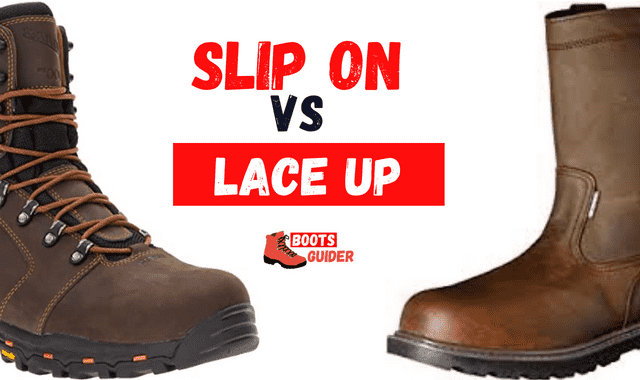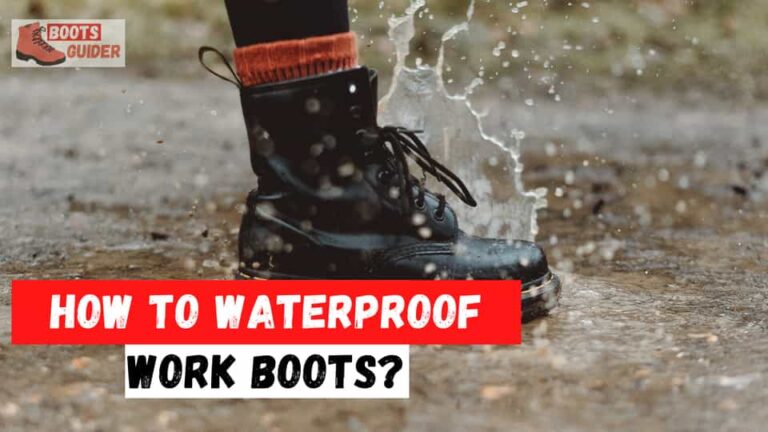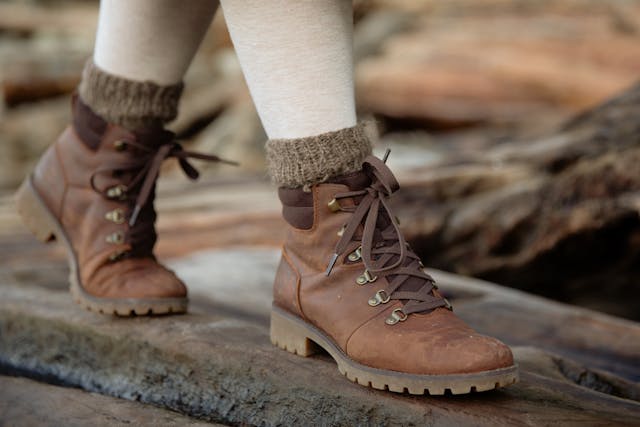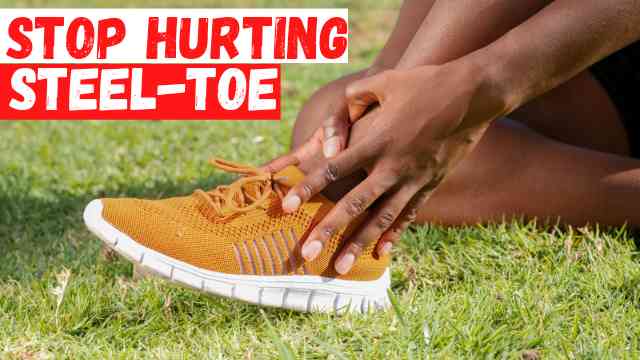The Ultimate Work Boot Size Guide: Finding Your Perfect Fit
Finding the right pair of work boots is more than just selecting a size off the shelf; it’s also about ensuring they fit comfortably and securely. This guide will tell you how to measure your foot accurately, select the appropriate size and other important variables. Say goodbye to blisters, pinched toes, and discomfort. A go-to boot size guide for you let’s dive in.
Why Proper Boot Sizing Matters
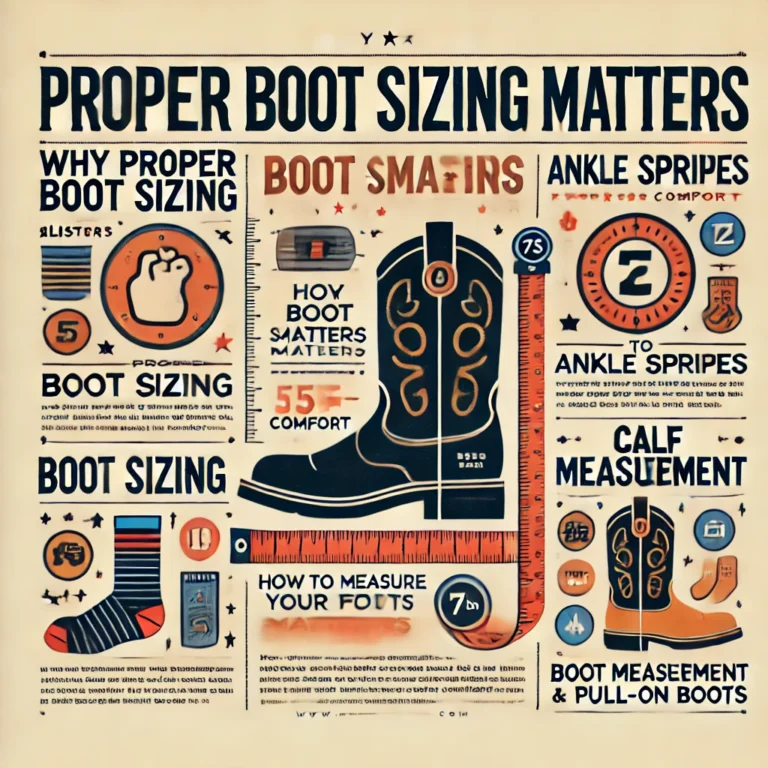
Neglecting size guides can lead to a world of pain. Even the most amazing boots won’t save the day if you miss the mark on the fit. Here’s why measuring your feet properly and sticking to boots size guides is an absolute game-changer:
- Avoid Painful Blisters & Calluses: Ill-fitting boots can rub against your skin like an abrasive friend you’d rather avoid. This friction can lead to painful blisters and calluses, making every step a wince-worthy experience.
- Prevent Ingrown Toenails, Corns & Bunions: Boots that are too tight can put excessive pressure on your toes, causing ingrown toenails, corns, and bunions to develop over time.
- Keep Numbness and Nerve Compression at Bay: Squeezing your feet into boots that are too small can compress nerves and blood vessels, leading to numbness, tingling, and potentially more serious issues over time.
- Reduce the Risk of Chronic Foot Conditions: Conditions like plantar fasciitis and hammertoes can develop if you don’t wear the correct size boots.
- Prevent Ankle Sprains and Foot Fatigue: Boots that don’t provide proper support can increase your risk of ankle sprains and leave your feet feeling fatigued.
How to Measure Your Feet
If you’re unsure which shoe size, follow these simple steps. Tip: Measure at the end of the day when your feet are at their largest.
Step-by-Step Guide
- Prepare Your Supplies: You’ll need a piece of paper, a pen, a ruler, or a flexible tape measure.
- Place the Paper on the Ground: Stand on it with your weight slightly forward to make sure your foot is flat.
- Trace Your Foot: Carefully trace the outline of your foot while standing on the paper. Ensure you wear the socks you plan to wear with your boots for accurate measurements.
- Draw Lines: Draw a line behind your heel and another line in front of your longest toe.
- Measure Length and Width: Measure the distance between the lines for length and the widest part of your foot for width. Use these measurements to find your size on the boot size chart.
Measure Your Feet Width and Get Shoes Width Chart
How are Boots Sized?
Everyone’s feet are individual, and correctly fitting boots are important. Remember, size and fit are different. Fit is affected by the style, last, and manufacturing technique used. Sometimes, sizing runs true, but using a measuring guide will help direct you to the right choice. The correct fit allows for room in the toe box and no heel slip. If the boot is too big and the heel slips, it risks damage to you and the boot. If too small, you risk black and bruised toes.
The Perfect Shoe Size
There is a 15mm toe allowance built into the sizing. This allowance ensures that your toes have enough room to move without feeling cramped.
Size Charts
Men’s Footwear Size Chart
| U.S. | EUR | U.K. | IN | CM |
|---|---|---|---|---|
| 2 | 33 | 1 | 8.1 | 20.6 |
| 3 | 34 | 2 | 8.4 | 21.3 |
| 4 | 35.5 | 3 | 8.7 | 22.1 |
| 5 | 37 | 4 | 9 | 22.9 |
| 6 | 38 | 5 | 9.3 | 23.5 |
| 7 | 39.5 | 6 | 9.6 | 24.4 |
| 8 | 41 | 7 | 9.9 | 25.4 |
| 9 | 42 | 8 | 10.3 | 26.0 |
| 10 | 43 | 9 | 10.6 | 27.0 |
| 11 | 44.5 | 10 | 10.9 | 27.9 |
| 12 | 46 | 11 | 11.3 | 28.6 |
| 13 | 47 | 12 | 11.6 | 29.4 |
| 14 | 49 | 13 | 11.9 | 30.2 |
| 15 | 50 | 14 | 12.2 | 31.0 |
Women’s Footwear Size Chart
| U.S. | EUR | U.K. | IN | CM |
|---|---|---|---|---|
| 4 | 35.5 | 2 | 8.2 | 20.8 |
| 5 | 37 | 3 | 8.5 | 21.6 |
| 6 | 38 | 4 | 8.9 | 22.5 |
| 7 | 39.5 | 5 | 9.3 | 23.5 |
| 8 | 41 | 6 | 9.5 | 24.1 |
| 9 | 42 | 7 | 9.9 | 25.1 |
| 10 | 43 | 8 | 10.2 | 25.9 |
| 11 | 44.5 | 9 | 10.5 | 26.7 |
Measuring Calf Circumference
When it comes to certain boot styles like cowboy boots or pull-on boots, calf circumference matters. The shaft of a boot plays a crucial role in ensuring a comfortable fit. To measure your calf circumference:
- Wear the Right Socks: Wear the type of socks you intend to wear with your boots.
- Use a Flexible Tape Measure: Wrap it around the widest part of your calf.
- Ensure a Snug Fit: Make sure the tape measure is snug but not overly tight.
Different Types of Foot Shapes
Understanding your foot shape is essential for finding the correct boot size. Whether you have high arches, flat feet, or wide feet, there’s a boot out there that caters to your unique needs.
Pro Tips for Measuring Your Feet
- Measure later in the day when your feet are at their largest.
- Measure both feet and use the larger measurement.
- Wear the socks you plan to wear with the boots.
- Stand up while measuring to get the most accurate measurements.
- Take multiple measurements to ensure consistency.
Different Types of Boots and Their Sizing Guides
Cowboy Boots
Cowboy boots should fit snugly around the ball of your foot and instep while allowing some heel slip for comfort. Be prepared to try different sizes to find the correct fit.
Pull-On Boots
For knee-high or pull-on boots, precise fit is essential since you can’t adjust them with laces. These may be slightly larger than your regular shoe size.
Standard Boots
For standard lace-up or zip-up boots, following the size chart and your foot measurements should lead you to the correct size. Consider the type of socks you plan to wear for optimal comfort.
Conclusion
You’ve just completed your boot-size guide journey and are now equipped with the knowledge to make an informed decision. Remember, finding the perfect pair of boots isn’t just about the dream boot itself; it’s about ensuring the correct size and fit. Your comfort and style are worth the effort.
Next time you’re on the market for boots, use your foot measurements and the size charts as your compass. Explore the wide variety of premium boot styles and brands to find your perfect pair, and don’t be afraid to experiment with different sizes to find the ideal fit. Happy boot shopping!
